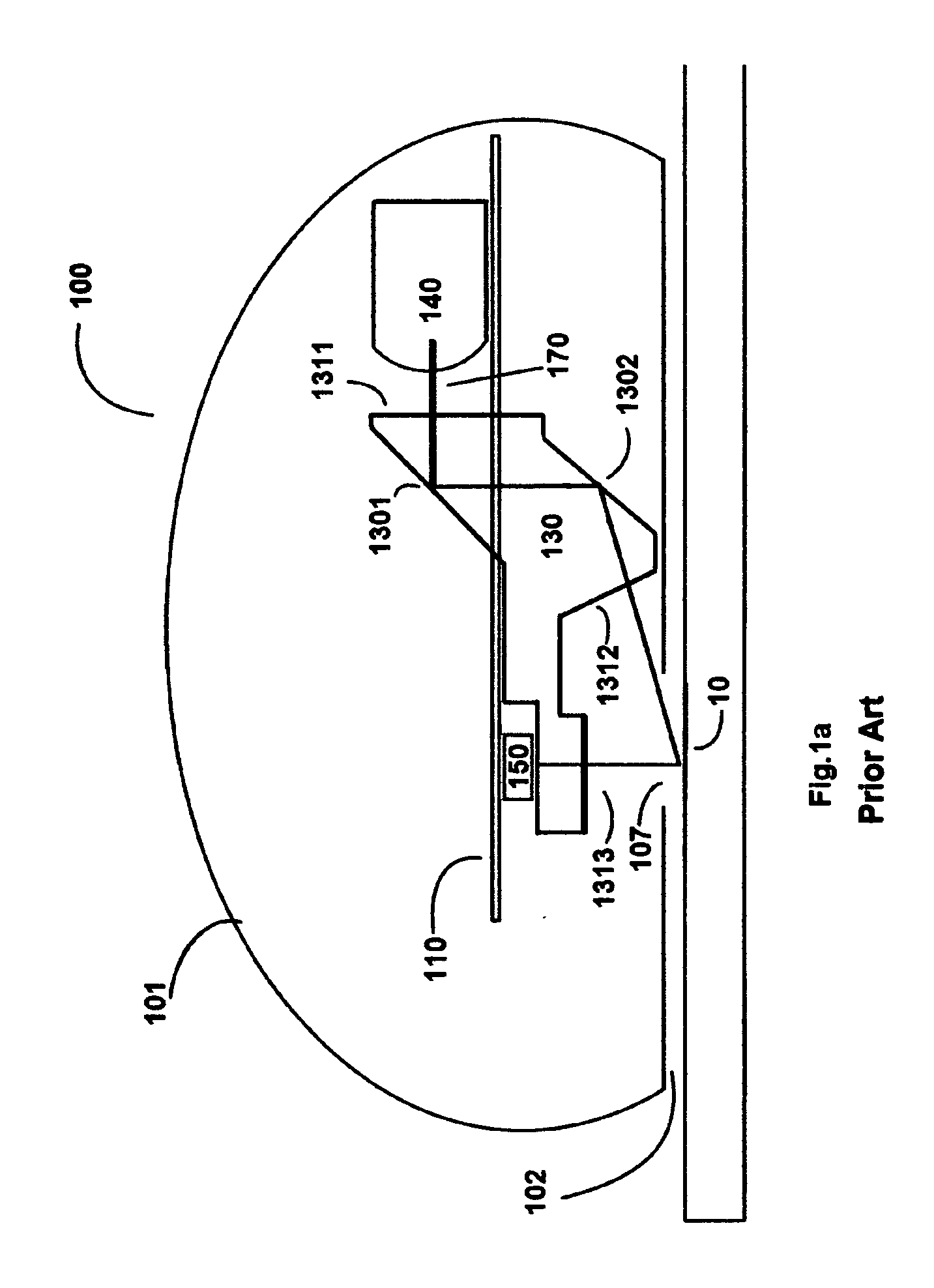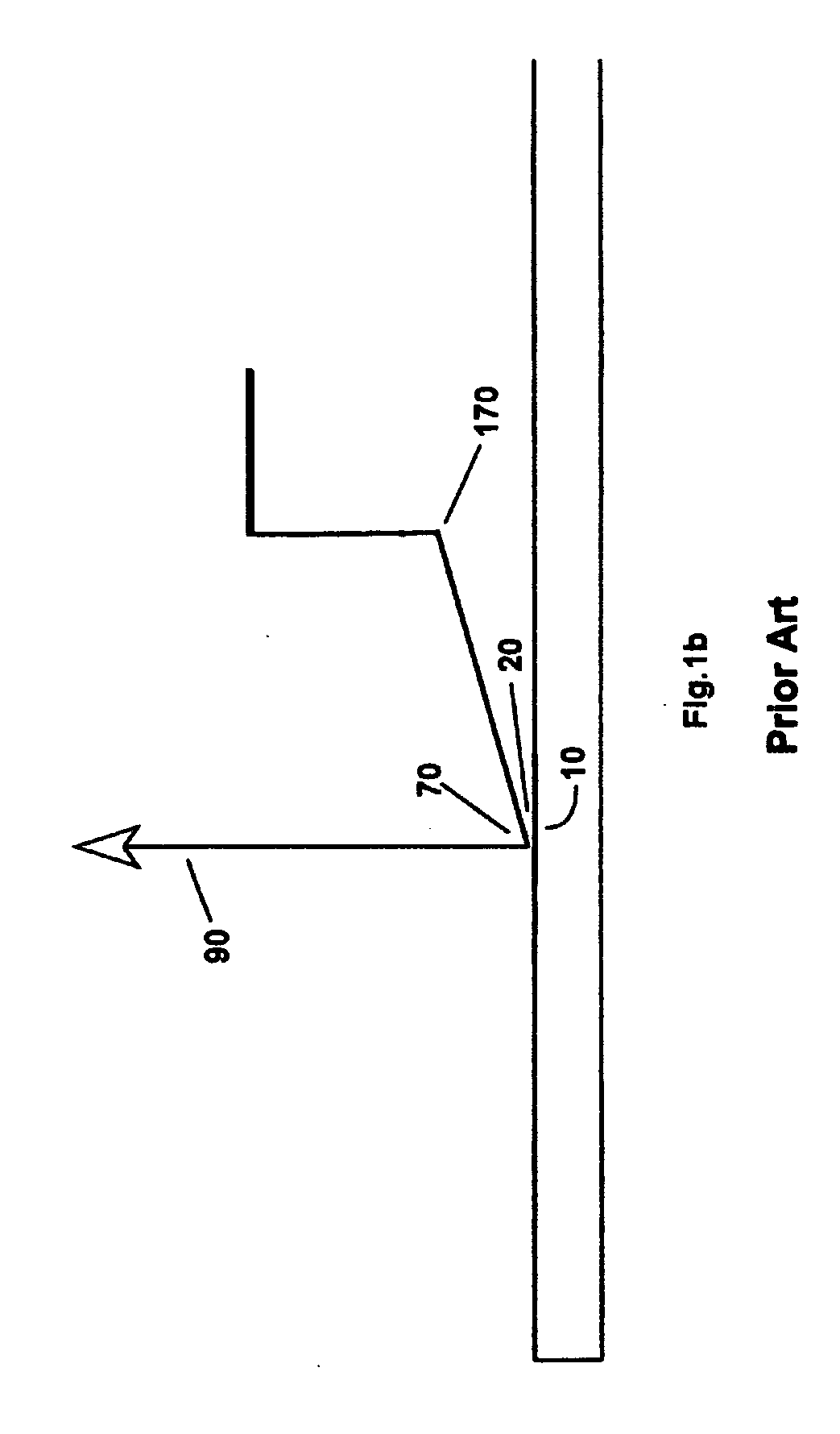Optical mouse system with illumination guide having a light spreading lens
- Summary
- Abstract
- Description
- Claims
- Application Information
AI Technical Summary
Benefits of technology
Problems solved by technology
Method used
Image
Examples
Embodiment Construction
[0032] Reference will now be made in detail to the preferred embodiments of the present invention, examples of which are illustrated in the accompanying drawings. Wherever possible, the same reference numbers are used in the drawings and the description to refer to the same or like parts.
[0033] Please refer to FIG. 2a, which shows a cross-section diagram of the internal components of an optical computer mouse according to an embodiment of the present invention. The cross-section traverses the exit aperture 2211 and entry aperture 2212, thereby causing the holder 220 to appear as if in three pieces.
[0034] An illumination source 240 and an optical sensor 250 are mounted on a printed-circuit board (PCB) 210. The illumination source 240 is typically a light-emitting diode (LED) in the SMD form factor, but the present invention may also use an infrared-emitting diode, a laser diode, or other suitable illuminating radiation emission source matched to the type of illumination that the op...
PUM
 Login to View More
Login to View More Abstract
Description
Claims
Application Information
 Login to View More
Login to View More - R&D
- Intellectual Property
- Life Sciences
- Materials
- Tech Scout
- Unparalleled Data Quality
- Higher Quality Content
- 60% Fewer Hallucinations
Browse by: Latest US Patents, China's latest patents, Technical Efficacy Thesaurus, Application Domain, Technology Topic, Popular Technical Reports.
© 2025 PatSnap. All rights reserved.Legal|Privacy policy|Modern Slavery Act Transparency Statement|Sitemap|About US| Contact US: help@patsnap.com



